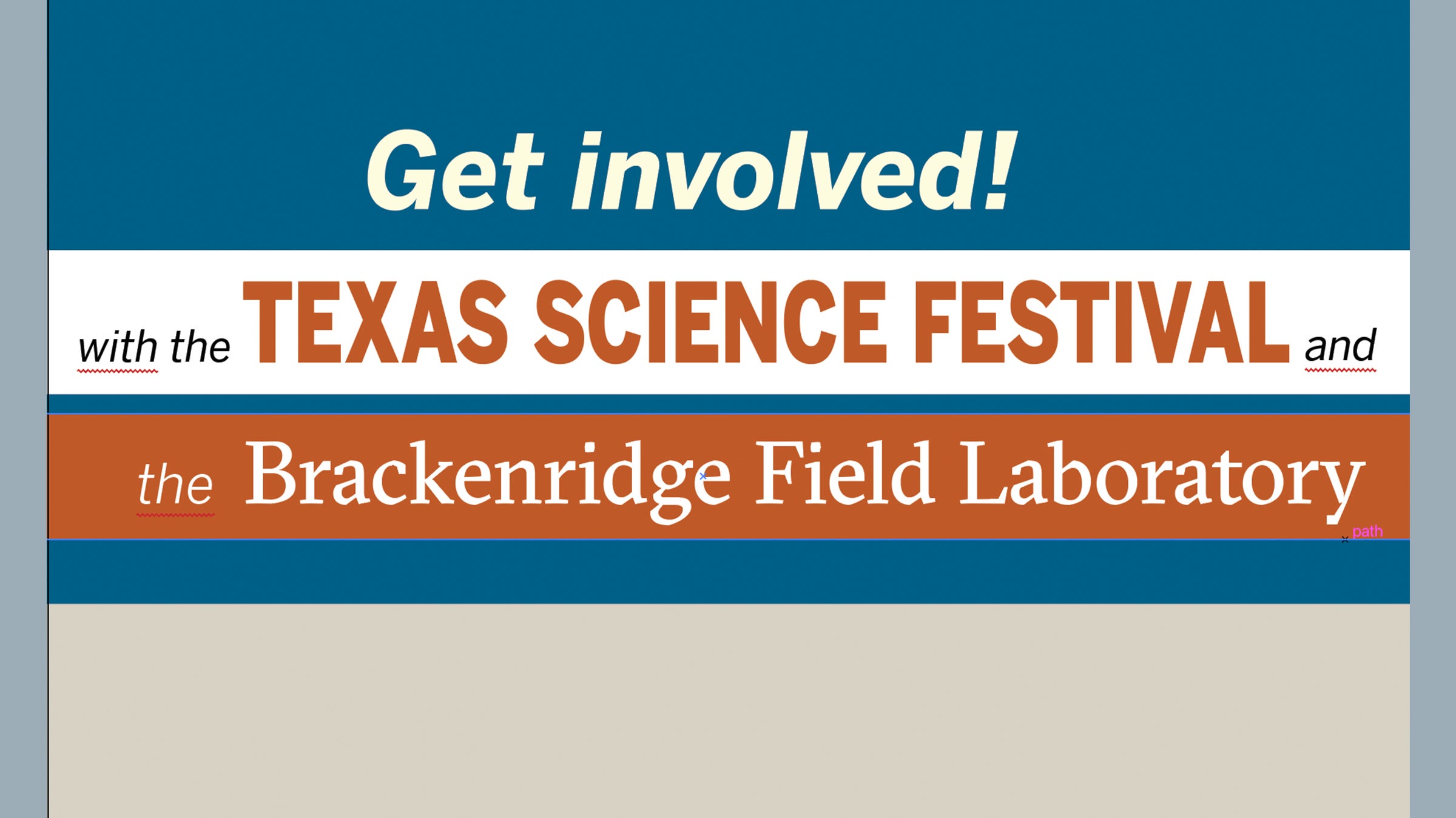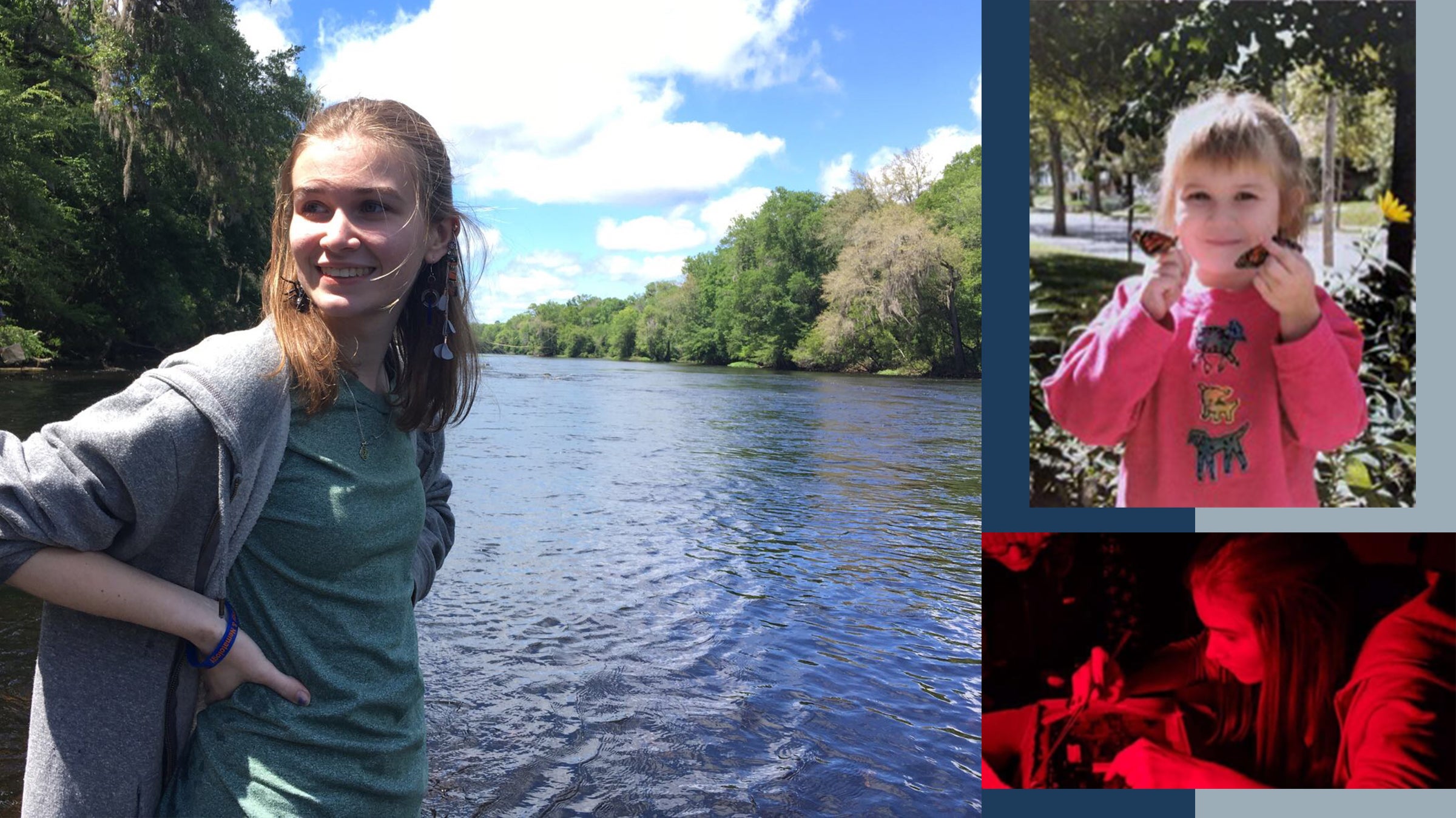
Sarah in the Wolf Lab Greenhouse at BFL fertilizing her plants.
Tell us where you came from before UT, and what you studied then?
I was born and raised in a small town in East Texas surrounded by Loblolly pine trees. I actually completed my undergraduate studies here at UT Austin studying Ecology, Evolution, & Behavior with a minor in statistics. My research in undergrad was advised by Dr. Caroline Farrior and centered around competition-mediated plant coexistence. More specifically, how the fitness of Nitrogen-fixer plants can be affected by species composition within a small community. This project initiated my interest in understanding how resource acquisition below ground can mediate community coexistence and ecosystem function and has since then been the focus of my work.
What got you interested in studying nutrient acquisition strategies in plants? And can you explain how you do this?
I wasn't always interested in plants, but I did always enjoy being outside. It wasn't until I took an intro plant anatomy and function course that I really started to understand just how complex plant form and function is. We tend to think that plants aren't doing a lot because they are sessile organisms, but that just isn't true! I like to think about how plants are interacting with the soil as well as the microbes in the soil and how these interactions can affect plant community structure and ecosystem functioning. Plants are incredibly dynamic and plastic in how they respond to changes in their environment and it’s fascinating how their responses can have such large upscale effects. I use a couple of different methods and study systems to explore these questions. But broadly, I use greenhouse studies to understand how resource strategies respond and change in a controlled environment, and then I scale out to look at how larger scale processes are affected using field studies. This combination allows me to draw clear connections between physiological and morphological changes that occur at the individual level and shifts in plant community structure and nutrient cycling.

Does Texas present a unique situation, challenge or benefit for your research?
Definitely a huge benefit! As a native Texan, I feel a close connection to the ecology of this land and I have integrated the study of Texas ecosystems throughout my graduate career. Texas climate is expected to change drastically in the coming decades as a result of global change. This is a major motivating factor in my research - to understand how native Texas plant communities are going to respond to global change, and how we can help sustain natural communities in the face of this change. To address this issue, we started a large field experiment at Brackenridge Field Laboratory in Fall 2020 to understand how global change, specifically drought and species loss, is going to affect native grassland communities. We've already learned so much about the resilience, and potential vulnerabilities, of Texas grasslands and we're looking forward to uncovering more as this experiment continues.
How will being a Stengl-Wyer Fellow help advance your work?
Being on a fellowship frees up your time from many obligations that other forms of funding come with. Without these obligations attached to this fellowship, I am free to devote more time to setting up and executing a large greenhouse experiment that investigates how Nitrogen fixation and resource allocation in legumes responds to changes in light and Nitrogen. This project serves as the last chapter to be completed in my dissertation, but is a tremendous undertaking and would be nearly impossible to complete with other large commitments. In addition to being time intensive, greenhouse experiments are also expensive! With the funding provided through this fellowship, the financial burden of funding this project is alleviated to a large degree.
But more than supporting my research, being a part of the Stengl-Wyer groups has supported my growth as a scientist. Discussions centered around research methods and tools, navigating post-graduate careers, and other professional development topics have offered new perspectives on how I approach my science. I have enjoyed being a fellow in this program and I am excited to continue working with this group beyond the program.

Do you use any of the resources at the Field Stations? If so, how?
I would say about 90% of my PhD work has relied on resources only available at the field stations. More specifically, because of the close proximity, lab space, and greenhouses, Brackenridge field laboratory (BFL) has been integral to my research thus far. As I mentioned before, I have been working on a biodiversity & ecosystem functioning field experiment that is housed at BFL for the better part of four years. A project like this is only possible because of the close proximity to campus, allowing undergraduates to easily commute to the field site. This has allowed us to provide research experience to dozens of undergraduate students and a few have completed senior thesis projects using data they collected from the field experiment. The greenhouse I use to conduct my individual studies is also located at BFL, and the support from the research staff there have made my experience 10 times better.
Where do you see your research agenda heading after UT?
To be frank, I'm not completely sure. Throughout my PhD, my interests have only grown, which has been amazing to think about so many cool ideas and questions, but it does make a clear path forward difficult. Regardless of where my interests lead me next, I want to continue to emphasize understanding mechanisms behind complex processes, connecting multiple ecological scales, and to hone my mentoring skills so that I may be an effective mentor to others. In some ways, this seemingly lack of direction gives me anxiety about what the future holds, but it also provides me with the flexibility to continue to explore new avenues of research and expand my science tool kit.



